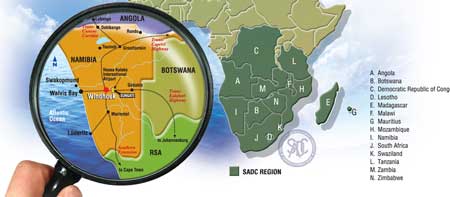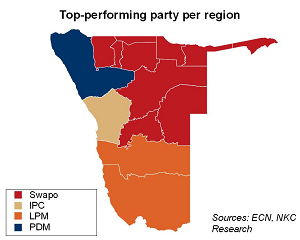
The Africa we want – SADC summit in Windhoek to look at institutional reform

Windhoek is the venue for next week’s 38th Southern African Development Community summit where delegates will critically look at the efficiency of the regional body, further strategies for regional integration, inclusive growth, and boosting socio-economic development especially for vulnerable or marginalised demographic strata.
The overarching theme for the two-day summit is the need for coordinated infrastructure and industrial development. The summit starts on Friday 17 August.
The theme builds on the previous four summits where industrial development systematically moved to the top of the regional development agenda. It also expands one of the key pillars of the SADC Regional Indicative Strategic Development Plan (RISDP 2015-2020), the need for integrated infrastructure networks as enabler of industrialization and market integration.
The summit will receive a progress report on the SADC Industrialisation Strategy and Roadmap for 2015 to 20163. The strategy’s three pillars are Enhancing Infrastructure, Strengthening Value Chains, and Corridor Development.
The SADC industrialization strategy, adopted in April 2015, seeks to achieve major economic and technological transformation at national and regional levels to accelerate economic growth through industrial development.
A Costed Action Plan for the Strategy covering 2015-2030 was approved in March 2017. The action plan details the key interventions for the strategy’s three pillars, defining the key enablers to unlock the region’s industrial potential.
The summit will also discuss progress on the implementation of the SADC Regional Infrastructure Development Master Plan (RIDMP) which is pivotal to the socio-economic growth of the region, including the industrialization agenda. The Master Plan provides for adequate regional infrastructure by 2027 at a projected cost of US$500 billion. It was approved in 2012.
The SADC Secretariat is currently reviewing progress of the first five-year phase 2012-2017 to add impetus to the implementation of regional infrastructure projects.
Cross-border infrastructure will cover six priority areas, energy, transport, tourism, water, information and communication technology and meteorology.
In the past, energy limitations became barriers to socio-economic development. Overcoming the energy deficit is seen as one of the main development priorities which must be overcome collectively. In 2017, for the first time in a decade, SADC generated surplus electricity.
Furthermore, the summit is expected to approve strategies for guaranteeing food security through investment in high-impact technologies that address chronic food and nutrition insecurity.
According to a report released in July, the State of Food and Nutrition Insecurity and Vulnerability in Southern Africa, the SADC region is estimated to have a cereal surplus of 6.3 million tonnes, down from 7.5 million tonnes the previous year. About 14% or roughly 29 million people are vulnerable in terms of food for the current year.
Youth empowerment is another developmental aspect that will receive much attention. As the timespan of the SADC Industrialization Strategy and Roadmap progresses towards 2063, the youth of today will reap the benefits of the key elements contained in the strategy.
Development needs peace and so another important issue for SADC leaders will be how to enhance peace and security as well as consolidate democracy and the rule of law. Although the region at large stable and peaceful, there are pockets of instability that continue to hinder peace and development.
The summit will discuss constitutional reforms in Lesotho, preparation for general elections in the Democratic Republic of the Congo, and the political situation in Madagascar.
The SADC Resource Mobilisation Framework (Alternative Sources of Funding for SADC Regional Programmes) is intended to determine how fiscal space can be created to enable SADC member states to finance regional programmes, projects and activities.
The six options for innovative sources of financing regional integration are the introduction of an export and import tax; a tourism levy; a financial transaction tax; a lottery system; philanthropy; and regional events. It is estimated that SADC can earn in excess of US$1.2 billion annually from these alternative sources to remove the current dependency on external funding
According to the SADC Secretariat, less than 10% of regional projects are funded by SADC member states. The lion’s share comes from international cooperation partners.
The SADC Secretariat was tasked to finalize the draft SADC Regional Resource Mobilisation Framework for submission to the Committee of Ministers of Finance and Investment, and ultimately to the SADC Summit of Heads of State and Government.
The summit will also receive a report from the human resources and administration committee, pertaining to review of the regional recruitment for the Secretariat. This was triggered by several challenges, including that of failing to fill positions because some member states had exhausted their allocated quota points.
Reviewing the application of the quota system is intended to ensure that the SADC Secretariat has access to high quality human resources from member states in a fair, effective and objective manner, while observing the principle of equity and representation without compromising delivery.
The summit is expected to present a common position on the African Union (AU) Institutional Reform, in line with an AU Assembly decision in January this year to consult the eight Regional Economic Communities that make up the AU on the need to review the institutional structure.
The SADC Secretariat has prepared an analytical paper that was reviewed by the SADC Council of Ministers in March and is expected to be submitted to the summit for approval.
Key issues proposed by SADC for AU institutional reform include; African leaders to be given sufficient time to consult nationally on strategic issues; An urgent and thorough study of the bureaucratic barriers that affect service delivery in the AU Commission and other organs and institutions; and Reducing AU summits from two to one per year.
* Southern African News Features are produced by the Southern African Research and Documentation Centre (SARDC), which has monitored regional developments since 1985. Website and Virtual Library for Southern Africa at www.sardc.net









































